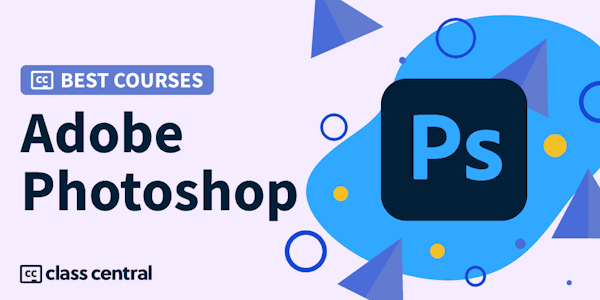Photoshop expert Deke McClelland teaches you everything you need to know about Photoshop, in the order you need to know it, complete with examples and practical advice.
Overview
Syllabus
Introduction
- Welcome to one-on-one
- How image editing begins
- Opening a file by double-clicking it
- The Home screen
- The Open command
- Opening from Adobe Bridge
- Opening an image in Camera Raw
- Let me show you around
- Zooming in and out
- Using the more precise Zoom tool
- Reassigning Spotlight and Siri (Mac only)
- Five ways to zoom continuously
- Scrolling (or panning)
- Bird's eye and other scrolling tricks
- Switching between open images
- Cycling between screen modes
- Using the Navigator panel
- Panels and workspace: Do not skip
- Resetting and updating workspaces
- A few important preferences
- The layered composition
- Introducing the Layers panel
- Converting the flat Background to a layer
- Jumping an image onto a new layer
- Flipping and scaling a layer
- Adding a vector-based layer
- Creating a basic layer mask
- Clipping one layer inside another
- Merging two layers into one
- Auto Select and the Move tool
- Inverting a layer mask
- Adding depth with layer effects
- Softening a mask with Feather
- Three ways to copy and paste layers
- Auto-zooming one or more layers
- The many ways to save
- Five essential things to know about saving
- Revert, autosave, and more
- Saving layers to the native PSD format
- The Maximize Compatibility option
- Saving a flat print image to TIFF
- Saving an interactive image to PNG
- Saving a flat photograph to JPEG
- Saving a cloud-based PSDC file
- Introducing luminance
- How luminance works
- The three auto commands
- Auto-correcting photographs
- Auto Brightness/Contrast
- Custom Brightness/Contrast
- Applying a dynamic adjustment layer
- Adjustment layer tips and tricks
- Adjustment layers and blend modes
- Introducing the histogram
- Putting the histogram to use
- Isolating an adjustment with a layer mask
- Color cast versus color harmony
- Identifying the color cast of a photo
- Correcting a color cast automatically
- Using the Color Balance command
- Revisiting the last-applied settings
- Correcting white balance in Camera Raw
- When Camera Raw disappoints
- Adjusting a color cast with Photo Filter
- Applying Auto Color nondestructively
- Introducing Camera Raw
- Camera Raw basics
- Working with a developed image
- Zooming and panning
- Working with panels
- Capture raw, convert to DNG
- Correcting for lens distortion
- Removing chromatic aberration
- Exposure and Contrast
- Highlights, shadows, whites, and blacks
- Working with Texture, Clarity, and Dehaze
- Opening and editing multiple images
- The real purpose of the White Balance tool
- Camera Raw tricks and tips
- Hue, Saturation, and "Vibrance"
- Color = Hue + Saturation
- How Vibrance works
- Adjusting Vibrance in Photoshop
- Deleting color sample markers
- Adjusting Vibrance in Camera Raw
- Introducing Hue/Saturation
- Using the Targeted Adjustment tool
- Selectively adjusting colors in Camera Raw
- Isolating a color range in Camera Raw
- The selective power of Photoshop
- Selection and Move tool basics
- Selecting an elliptical object
- Using the Paste Into command
- Using the Copy Merged command
- Add, subtract, and intersect selections
- Using the Magic Wand tool
- Using the three Lasso tools
- Painting with the Quick Selection tool
- Using the Object Selection tool
- Too many pixels
- Introducing Photoshop’s Crop tool
- Cropping without deleting any pixels
- Aspect ratio and other tricks
- Working with the reference point
- Finessing a crop with Canvas Size
- Using Content-Aware Crop
- Two ways to use the Straighten tool
- Straightening with the Ruler tool
- Cropping away all transparent pixels
- Cropping and straightening in Camera Raw
- Using the Perspective Crop tool
- Cropping everything outside the canvas
- Learning to paint
- Introducing the Brush tool
- Painting pressure-sensitive brushstrokes
- Changing the size and hardness on-the-fly
- Previewing size and hardness
- Opacity versus Flow
- Erasing with the tilde key
- Roundness, Angle, and the arrow keys
- Using the Smoothing options
- Painting with automated symmetry
- Rotating and resetting your view
- Using an iPad as a sidecar tablet
- Your best face forward
- Using the Spot Healing Brush
- Healing to an independent layer
- Using the standard Healing Brush
- Using the Clone Source panel
- Rotating the source pixels
- Restoring blown highlights
- Using the Patch tool
- Shift-clicking to heal in straight lines
- The Dodge and Sponge tools to whiten teeth
- The Camera Raw Spot Removal tool
- How digital images work
- Image size and resolution
- Introducing the Image Size command
- Common resolution standards
- Upsampling vs. real high-resolution data
- Changing the print resolution
- Downsampling for print
- Downsampling for email and photo sharing
- The seven interpolation settings
- Real-world rules for downsampling
- Upsampling with Preserve Details 2.0
- Print from RGB, not CMYK
- Using my customizable printer test file
- The Print command and color management
- Print size and position
- Using printer-specific options on the PC
- Using printer-specific options on the Mac
- Brightening your image for print
- Description and printing marks
- Establishing a borderless bleed
- Free-range images
- Assigning copyright and contact info
- Copyrighting multiple images at a time
- How color works on the web
- Quick Export as PNG
- Quick Export as JPEG
- Introducing the old-school Save for Web
- Saving an 8-bit GIF or PNG
- Saving an animated GIF file
- Exporting vector-based layers as SVG
- Exporting multiple layers and groups
- Until next time
Taught by
Deke McClelland


